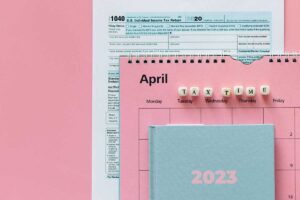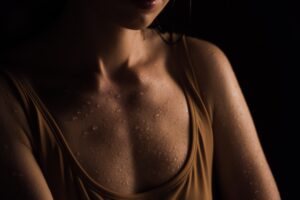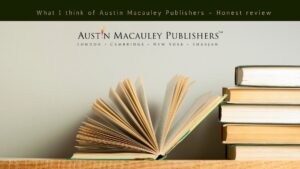March being Women’s History Month, it is a perfect opportunity to celebrate talented historical female authors. Why just authors and not any other occupation? Because I love reading and I strongly feel that the work of female authors has been discredited for way too long. Now is the time that we go back in time to rediscover their work and credit them for all they did. So let’s get started.
Let me put this straight first, it is not just America, Britain, or Europe. The struggle for gaining acknowledgment and equal rights was a global issue across all continents. Some rose above it gradually some are still fighting the demons of oppression of women.
History of American Female Authors

In the 17th century, women in America were imperiled to the same lawful consequences that of witchcraft if they so much so ‘wore heels to lure a man into marriage’. By the descent of the 18th century, the new progressive American law permitted married women to own property and business in case their men were incapacitated for some reason.
For female authors, it offered the opportunity to publish their work by their own name and retain copyrights of their books. But this liberty was strictly restricted to the women who were married and it by no means meant acceptance by their prejudiced audience. In the following blog, you would hopefully understand the extent of prejudice that was held against female authors. In the 1850s American law granted unmarried women the right to own and manage property in their personal capacity and sign contracts in their own name. By then women started to raise their voices for equal pay. To those unaware, in those times a woman was paid less than their male counterparts doing the same job.
It was seen as befitting for the reason that women were not necessarily the bread earner of the family and were financially supported by a male family member. The feminists argued that this thinking was making women dependent on men and thus hindering their independence. To state the obvious, his practice was largely unfair and demeaning towards women. In the 1960s laws were established to abolish the sex-based disparity in wages. In those times the females author made less money than their male counterparts. This was partly also because of the prejudiced book audience held against female authors at that time.
(Let me tell you that prejudice is very much prevalent till day which will be clarified in the following article). The prejudiced audience was not limited to the reading community but publishers and critics of that time. Certain genera were considered ‘inappropriate’ for women writers. This forced female authors to adopt male pseudonyms to give them a fair chance to their work. However, this strategy made the contribution of female authors through history unmarked and unrecognized.
James Tiptree Jr.
Alice Bradley Sheldon is one of the great female authors who opted for a male pseudonym James Tiptree Jr. She later stated that it was a ‘good camouflage’ as she was tired of judging eyes following her for being the first female in too many men only occupations of that time. Before she begins to write, she had worked as a painter, graphic artist, and art critic.
Fun fact: The famous Robert Silverberg in his introduction to ‘The Girl Who Was Plugged in’ insisted that James Tiptree Jr.’s pseudonym must belong to a male author as syntax and lexicon in the book is very masculine and the writing style was “simple, direct, and straightforward”. So now you know which attributes were not associated with female authors.
A.M. Barnard and Isak Dinesen
Speaking of attributes associated with female authors reminds me of Louisa May Alcott is best known for ‘Little Women’ which was published under her own name and was an instant success. The novella which was published in two parts initially is till day regarded as one of the best classics. However, her intense gothic thrillers ‘A Long Fatal Chase and ‘Behind a mask’ was published under an ambiguous pseudonym, A.M. Barnard. This measure was taken because the publisher insisted that her work was ‘unladylike’. Famous ‘Seven Gothic Tales’ was also written by an ‘unladylike’ female author Karen Blixen under a male pseudonym Isak Dinesen.
History European Female Author

First Female German Author
Frau Ava born in 1060 is the first recorded female author of German descent. She is credited with five poems on Christian themes. Little is known about her personal life other than that she was married and had to son. One of her sons died in her life. These are the only known fact here. Her work critics regard the style and theme of poems are similar, simple, and rhyming (soft and very ladylike). Her vast knowledge and deep understanding of Christian theology are praised by critics.
German Sappho
Anna Louisa Karsch (1722-1791) also tilted as the ‘German Sappho’ was the first-ever woman to live from the proceeds of her literary work. Growing up she loved reading which earned her a beating from her stepfather for her reading mania. The first praise of work came as a ‘refusal to accept it could have been written by a woman’.
George Sand
Lucile Dupin (1804-1876) was another famous French novelist published under the male pseudonym George Sand. Now, who is unfamiliar with George Sand? But a few know about Amantine Dupin. She was fortunate to have quite a liberal upbringing. What historians like to highlight about her is that she was a legitimate child of a man best known as an illegitimate royal and she married another illegitimate child of a military officer.
Although she married and had two children but divorced later, and till the day is remembered for her romantic rebellion. Seriously these are the things critics highlighted and history remembered about successful authors. Not many will tell you that by the age of 27 she was the most popular writer of any gender in Europe.
Selma Lagerlöf
Her literary capacities were acknowledged by many men of her age along with her charms as a woman, (always objectifying the body of female celebrities). While most men and women of her time praised her, like any celebrated person she also gained a few passionate critics like Charles Baudelaire who went as far as calling her a slut on public platforms. Mind you calling a lady’s name ‘slut’ publically is not very gentlemanly in this day and so was not in those times.
Many successful liberal women of that time were condemned for their freedom of choice, and Baudelaire’s major criticism was of her ideas on morals. She was deemed too bold for her times because she smoked and wore men’s clothing. Nobel Prize of Literature which was first awarded in 1901 was the first time awarded to a female author in 1909. Selma Lagerlöf, a Swedish novelist was the first female author to be awarded Nobel Prize in Literature.
No woman was awarded the title for the next fifteen years. Selma was also the first female member of The Swedish Academy, where she gained her acceptance in 1914. She is also credited for being the first woman to be depicted on the Swedish Banknote.
British Female Authors

Once upon a time in Britain, women were not legally allowed to sign a contract and were required to be represented by a male family member to sign the contract on their behalf. In the early eighteenth century, ladies who aspired to write full-time were told that they are patronizing their own femininity. Primary roles for women were wife and mother and writing was regarded as ‘a hobby’ and not a profession for women writers. Female authors were published anonymously to offer a better chance to their work, which was otherwise seen as a low-quality by-product of a hobby.
Jane Austen
The very famous Jane Austen author of Pride and Prejudice and Sense and Sensibility published all her work anonymously. (except pride and prejudice) and ‘on commission’ as no trade publisher was willing to ‘risk’ with her. Austin sold the copyrights of ‘Pride and Prejudice’ to her publisher for £110. Wikipedia reports that she could have gained a proceeding of £475 if she had opted to publish the novel ‘on commission’. (So much for advocating self-publishing or commission-based publishing).
Brontë family
Till now we have established that historically writing was a primarily male-dominated profession, and even the best women writers were required to opt for a male pseudonym to avail a better reception in the market. An additional example is Ellis Bell, author of the famous classic novel Wuthering Heights, who was, you guessed it written a female author, Emily Bronte.
She belonged to the literary Brontë family, which included her two sisters Anne Bronte and Charlotte Bronte who published their work under the respective male pseudonyms Acton Bell and Currer Bell. These three were daughters of Patrick Brontë, an Irish priest, and author who lived most of his life in Britain. The Brontë sisters though much talented had to publish their work under male pseudonyms before they were acknowledged as masterpieces of literature.
George Eliot
One more case from history is a very talented female novelist, Mary Ann Evans (1819-1880), who published under the male pseudonym George Eliot. ‘Middlemarch’ is one of her masterpieces which is often described as the greatest novel in English literature. Her work was appreciated for its realism and elaborate psychological insight.
Another astounding fact from the past is that she belonged to an era when girls were not offered education but her father made arrangements for her education. Although extraordinarily intelligent and a keen reader, her lack of physical beauty encouraged her father to educate her because she was deemed less likely to find a husband. She was granted access to the library of Arbury Hall due to the influences of her father.
Virginia Wolf
Society evolved and in came the modernist period which offered a better opportunity for women writers like Virginia Woolf. Virginia Wolf (1882-1941) is counted among one of the greatest novelists of the twentieth century and from ‘The Voyage Out’ to ‘Between the Acts’ she left a definitive mark on the history of literature. She was much facilitated by her husband and brother in publishing her novels.
Harper Lee
You would think that after the 1950s we would have moved past the prejudices against female authors, but No! In 1960 an all-time best-seller novel ‘To Kill a Mockingbird’ by Harper Lee was published and was translated into more than forty languages. The real name of the female author is Nelle Harper Lee, who upon the recommendation of her publisher, dropped her first name to remove the female identity. While the protagonist of her crime thriller about honor, prejudice, and injustice in the South was a young female, the plot was dominated by strong male characters.
Toni Morrison and Nobel Prize in Literature
Now finally a pleasant breeze for female authors. In 1993 Toni Morrison was awarded Nobel Prize in Literature. Her most popular work is the best-selling and award-winning novel Beloved, which was also made into a movie. I will take this opportunity to bring your attention to the fact that out of 114 years-long histories of the Nobel Prize Award, only 51 awards are given to women out of which 14 laureates are from Literature. This shows that the Nobel Prize in Literature was awarded to male writers for a century (100 years), and female writers for only 14 years. This ratio is not only alarming but worth bringing attention to on larger platforms.
Second Wave of Feminism

The Second Wave of feminism initially started in the USA and quickly spread over the entire West. The campaign brought attention to the fact that women have always been writing but female authors are underrepresented in literature because of the male pseudonym used and the work of women writers needs to be rediscovered and reclaimed.
J. K. Rowling and Rob Thurman
Harry Potter was my childhood and it somewhat shaped me as a person as I grew up with the golden trio. I am a die-hard fan and associate myself with clever and ambitious Slytherins. It is not news to anyone that J. K. Rowling, is a female author and her real name is Joanne Rowling. It is well-known information that her publisher encouraged her to take a more ambiguous pseudonym supplying the logic that a female author’s name might be off-putting for the targeted audience of young male children.
Later when Rowling decided to write for a mature audience she picked the male pseudonym Robert Galbraith, to publish her crime mystery The Cuckoo’s Calling. As much as she would like to defend her choice for opting for a male pseudonym, stating she didn’t want her reputation to color the expectations from her new work, I call ‘Liar, Liar Pants on Fire’. As much as I respect them for influencing my childhood and creating a magical world, I am willing to pick a fight with her on this. She could have picked a new pseudonym which was female.
But no! She picked a male name to secure herself from the prejudice of crime fantasy readers. Interestingly ‘The Cuckoo’s Calling’ although performed moderately well initially but received a lot more attention and sold way more copies once it was discovered that it was actually written by J. K. Rowling. But behold British Rowling is not alone! Have you too enjoyed the sci-fi Cal Leandros Series by American Author Rob Thurman? Well, surprise surprise! Rob Thurman is actually Robyn Thurman.
She too timidly tries to defend her choice by stating she was always nicked name by her family Rob, but the truth is that female authors are still looked at with prejudice in general like sci-fi, crime, horror, and action-oriented audience, which includes, publishers, critics, and readers alike.
Black Female Authors

There are many accomplished and renowned black female authors who have made significant contributions to literature.
- Toni Morrison (1931-2019) – Morrison is widely considered one of the most important authors of the 20th century and won the Pulitzer Prize and the Nobel Prize in Literature for her novels.
- Maya Angelou (1928-2014) – Angelou was an accomplished poet, author, and civil rights activist, who wrote several best-selling memoirs, including “I Know Why the Caged Bird Sings”.
- Zora Neale Hurston (1891-1960) – Hurston was an anthropologist, author, and filmmaker, known for her novel Their Eyes Were Watching God, which is considered a classic of African-American literature.
- Alice Walker (born 1944) – Walker is an author, poet, and activist, known for her Pulitzer Prize-winning novel “The Color Purple”.
- Angela Davis (born 1944) – Davis is a scholar, author, and activist, known for her writings on race, gender, and social inequality, including the books “Women, Race, & Class” and “Are Prisons Obsolete?”
- Kimberlé Crenshaw (born 1959) – Crenshaw is a legal scholar, civil rights advocate, and the originator of the theory of intersectionality, which is the study of how different forms of discrimination interconnect and overlap.
- Nalo Hopkinson (born 1960) – Hopkinson is a Jamaican Canadian science fiction and fantasy writer and editor, known for her novels, including “Brown Girl in the Ring” and “The Salt Roads”.
- Chimamanda Ngozi Adichie (born 1977) – Adichie is a Nigerian novelist and writer, known for her novels, including “Half of a Yellow Sun” and “Americanah” which won the National Book Critics Circle Award.
- Ta-Nehisi Coates (born 1975) – Coates is an American author, journalist, and writer of non-fiction and fiction, known for his book “Between the World and Me” which won the National Book Award.
- Brit Bennett (born 1990) – Bennett is an American novelist and essayist, known for her debut novel “The Mothers” which was a New York Times bestseller.
These are just a few examples of the many accomplished black female authors out there. Each of these authors wrote in different genres and have different storytelling styles, but all of them have made significant contributions to literature.
Conclusion
As evident from the above blog female authors have come along but we still have a long way to claim our rights and protect our contributions from been undermine or overlooked. Here is to hoping we stand together and stand tall. Here is to hoping future generations come to the terms with the fact of how ridiculous it is to attribute certain writing skills to a certain gender. Here is to hoping that the future holds a book publishing industry free from gender biases.








